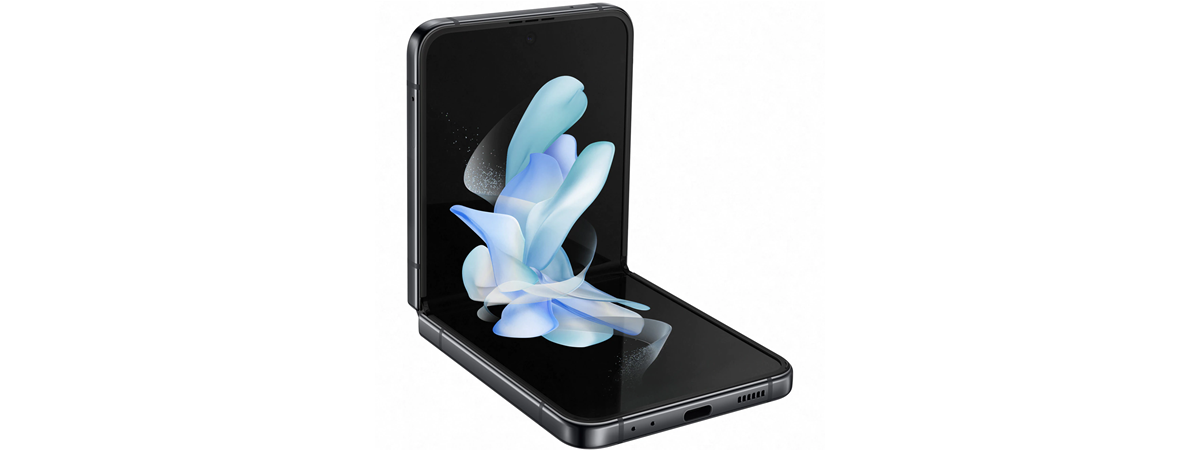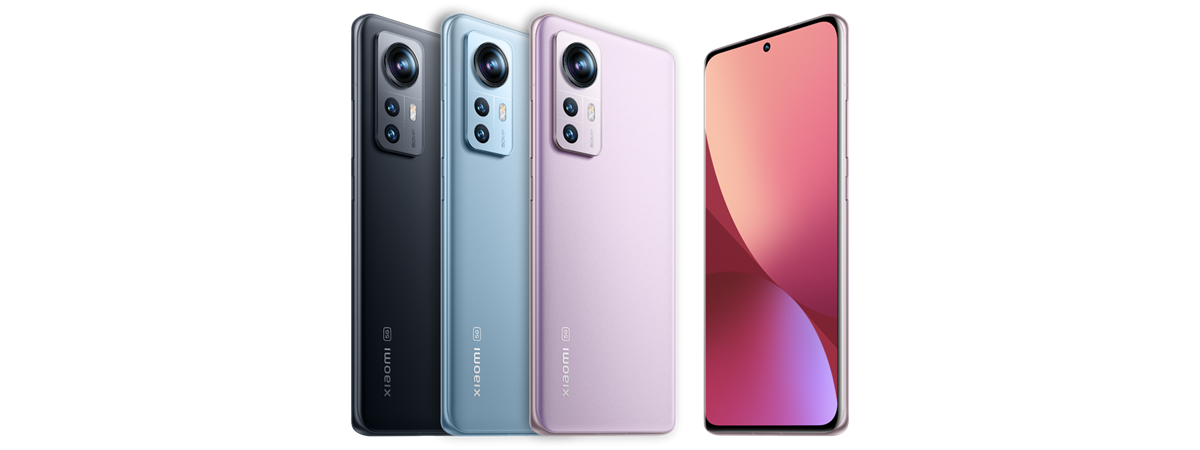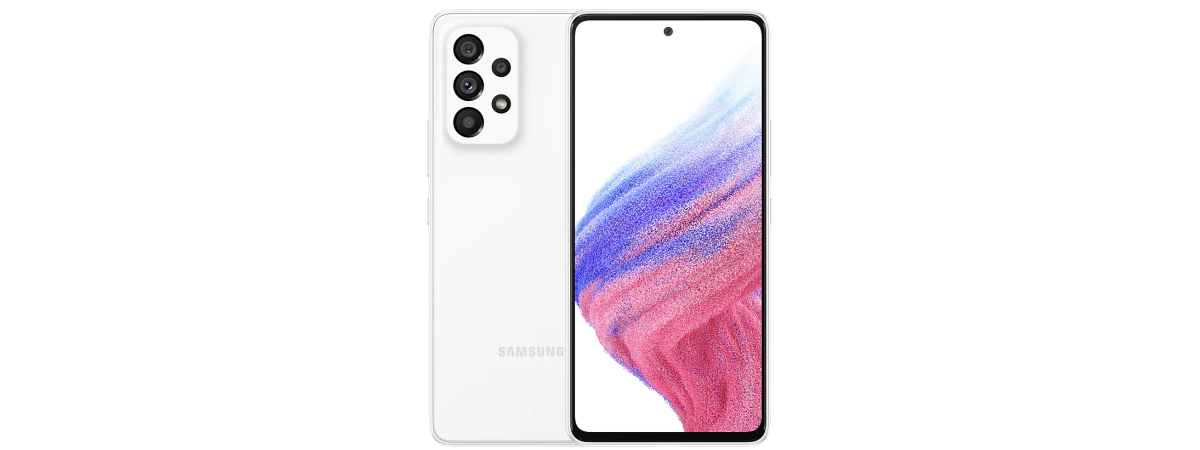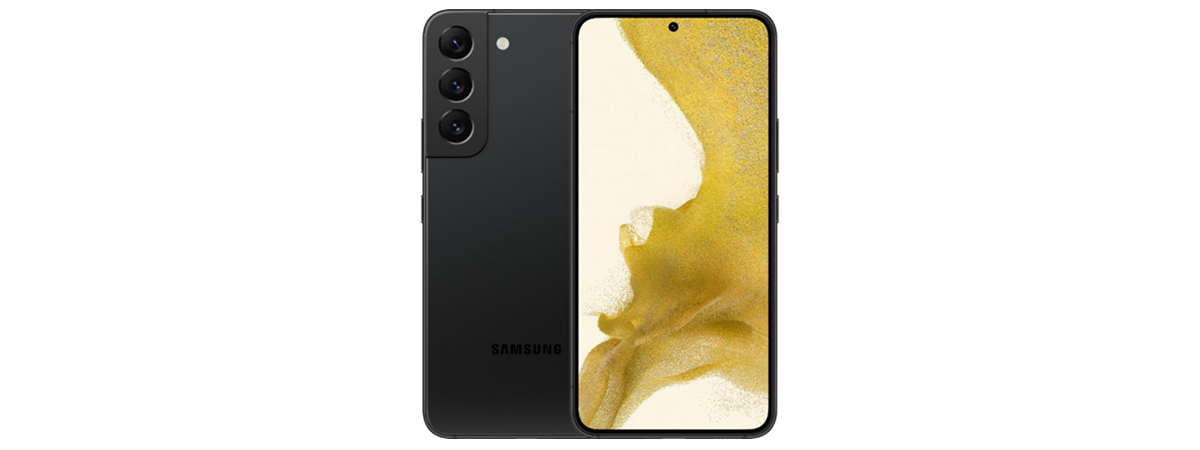
Finally, a compact Android flagship smartphone from Samsung. Ever since the Galaxy S7, Samsung’s top-of-the-range smartphones have only gotten larger and heavier. Not anymore! While the Samsung Galaxy S22 is by no means tiny, it’s still smaller and thinner than its Android competitors. Does this mean that Samsung made compromises in regards to build quality of the device or its specs? I tested it thoroughly, benchmarked it, and used it daily for two weeks, and the conclusion is, spoiler alert, no, almost no corners have been cut. Samsung has taken the S21 and refined it in every aspect. Read this review to find out more about my experience with the Samsung Galaxy S22:
Samsung Galaxy S22: Who is it good for?
The Samsung Galaxy S22 is a great choice for:
- Users who want to upgrade to the latest Samsung Galaxy flagship device
- Android users who enjoy a compact and powerful smartphone
- Smartphone users who want the best gaming and multimedia performance and are never too far from a charger or an external battery
- People who want an experience similar to what Apple offers without the restrictive ecosystem
Pros and cons
Testing the Samsung Galaxy S22 5G revealed lots of qualities:
- It can be considered a compact flagship, one of the precious few on the Android market today
- It’s a very sturdy smartphone, with an IP68 rating
- Top build and material quality
- Its performance is near the top of the charts
- The AMOLED screen is excellent, bright, with a high pixel density and 120 Hz refresh rate
- The cameras are very good as well, even in poor lighting conditions
There are very few things that could have been improved, starting with:
- The battery life - it’s not bad, but it’s worse than that of the previous generation
- The lack of a fast charger, screen protection, or a case
- The same smartphone with the same name has two very different chipsets, depending on the region. Graphical performance differs between the two chipsets used, sometimes by a substantial margin

Verdict
We have a winner! And not because of bold moves, not because of fancy, experimental tech, but because Samsung decided to improve on its already great Galaxy S21. The Samsung Galaxy S22 is a natural evolution from its predecessor. Better cameras, better performance, a more compact chassis, the same polished interface and ecosystem integration, and all that at a similar price as last year’s flagship. If it weren’t for that small decrease in battery capacity (and battery life), I would’ve had nothing major to complain about. I highly recommend the Samsung Galaxy S22 for people who want the best all-round Android smartphone and for those who love compact smartphones.
Unboxing the Samsung Galaxy S22
The package for the Samsung Galaxy S22 5G is, as usual, very simple and relatively small. The box is completely black, continuing the trend from last year’s S21. Its dimensions are 6.37 x 3.38 x 1.42 inches (162 x 86 x 36 mm) and on its front, it only features the name of the smartphone.
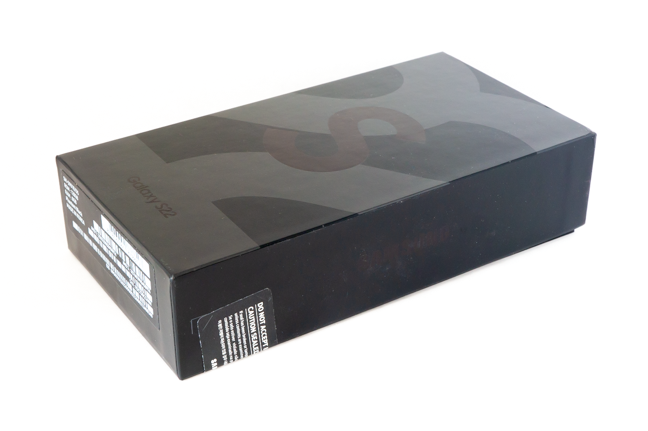
The box the Samsung Galaxy S22 comes in
On the back of the box, you get the same notice you got on the previous generation of Samsung’s flagships, that the box doesn’t include a charger. This, as well as the fact that the package is made out of recycled materials and is printed with soy ink, is consistent with Samsung’s goal to lessen the impact its devices have on the environment.
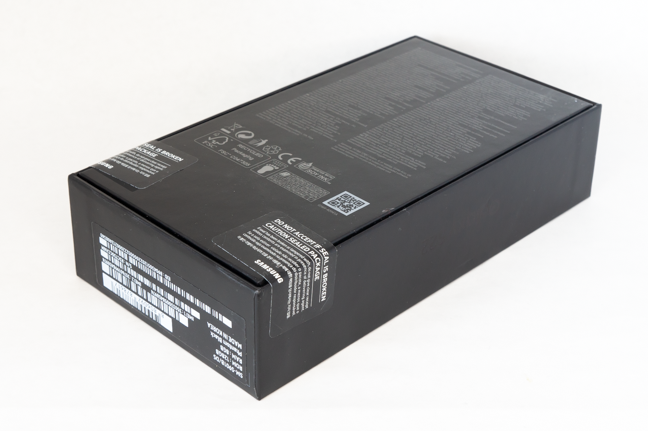
The back of the Samsung Galaxy S22 box
The minimalistic approach is continued inside the box. Here, you only find the usual leaflets, the SIM ejection tool, a 3.3 feet long (1 meter) USB-C to USB-C cable, and, of course, the smartphone.
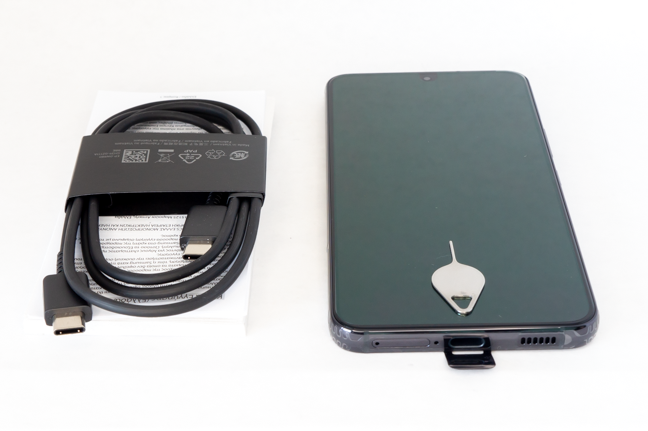
Samsung Galaxy S22: package contents
Unboxing the Samsung Galaxy S22 is, as expected, nothing out of the ordinary. Apart from the bare minimum, there are no accessories in the box. The package is sturdy, eco-friendly, and has attractive embossed graphics.
Design and build quality
When you compare it to the Galaxy S21, the Samsung Galaxy S22 feels and looks like an iterative update. It’s slightly smaller in all dimensions (5.75 x 2.78 x 0.30 inches or 146 x 70.6 x 7.6 mm versus S21’s 5.97 x 2.80 x 0.31 inches or 151.7 x 71.2 x 7.9 mm), lighter (5.89 oz or 168 grams, three grams lighter than the S21) and its chassis feels sturdier. It’s not just an impression, as due to the shape of the Galaxy S22, the frame is thicker and the overall structural strength of the device has clearly increased. The Galaxy S21 had a rounded back, whereas the Galaxy S22 is almost flat. This is true on the front as well: the S21 had what’s called a 2.5D glass, with rounded edges; the Galaxy S22, on the other hand, has a perfectly flat display, with its edges protected by the same aluminum frame. This bodes well for the drop and scratch resistance, as well as the fact that the display and the back are protected by Corning Gorilla Victus+ glass.
On the front of the Samsung Galaxy S22, you can only see a tiny cutout for the camera. There are other features as well, but they are invisible: a light sensor, a proximity sensor, an ultrasonic fingerprint reader, and the main speaker. If you look closely, you may notice the speaker slit above the camera, but overall, the front is as clean as they get.
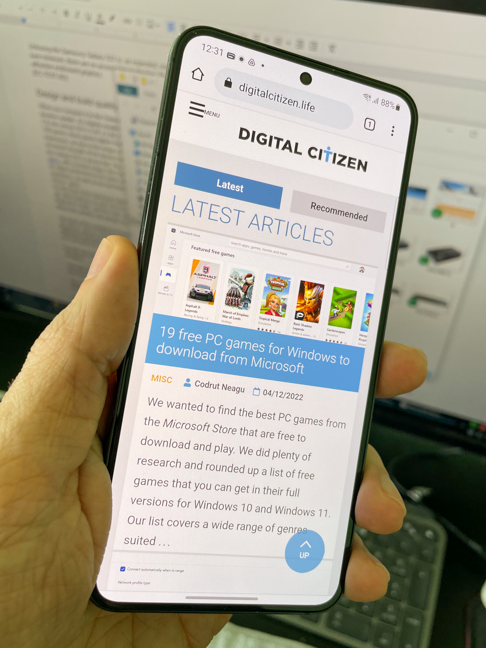
The front of the Samsung Galaxy S22
The back of the smartphone features the triple-camera system, slightly raised from the rest of the phone, and an LED flash. The design is very similar to the one of the Galaxy S21, with the main differences being the back cover material (frosted glass, in this case) and the fact that on the Galaxy S22, the back isn’t curved towards the edges.
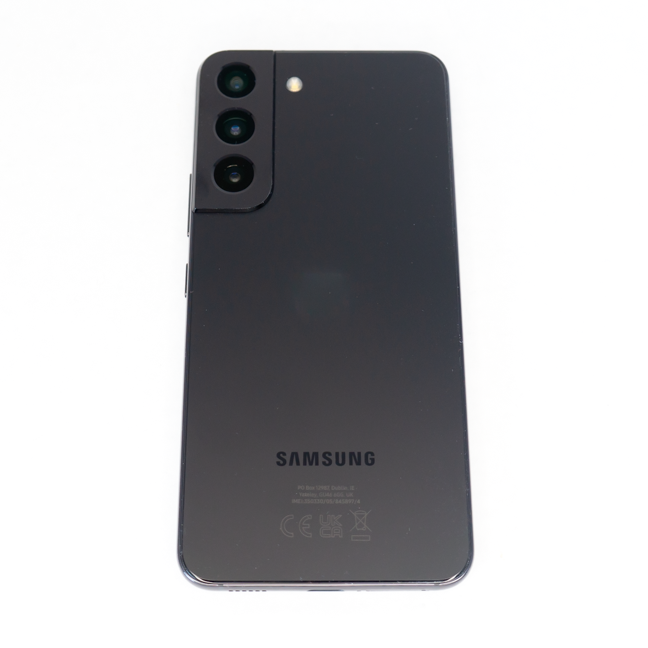
The back of the Samsung Galaxy S22
The left side of the phone has no ports or buttons, only two plastic inserts which facilitate signal reception.
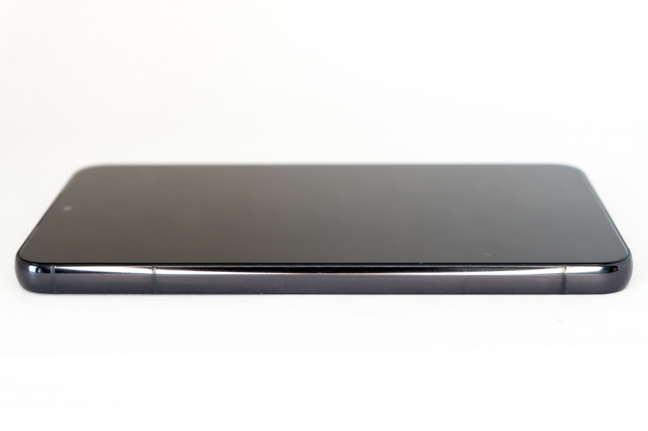
The left side of the Samsung Galaxy S22
The right side contains all the buttons (the volume rocker and the power buttons). Pressing them provides good feedback.
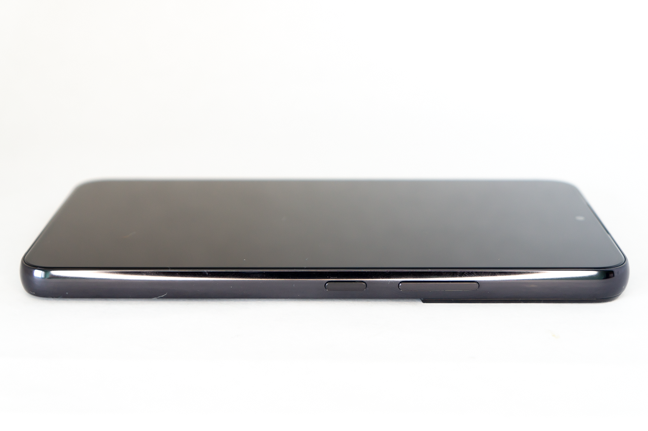
The right side of the Samsung Galaxy S22
The top of the smartphone has a hole for one of the microphones and a plastic insert, again for the GSM antenna.
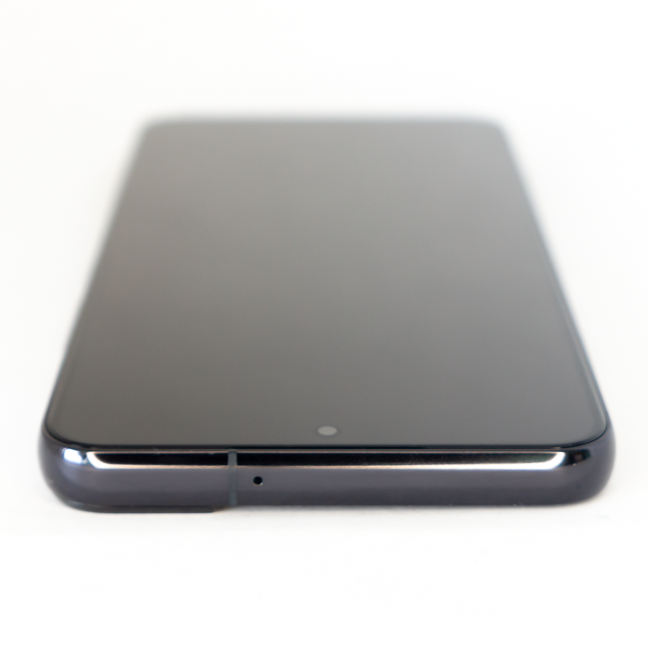
The top of the Samsung Galaxy S22
The bottom of the Samsung Galaxy S22 houses the USB-C charging port, the main microphone, the SIM tray, and the second speaker.
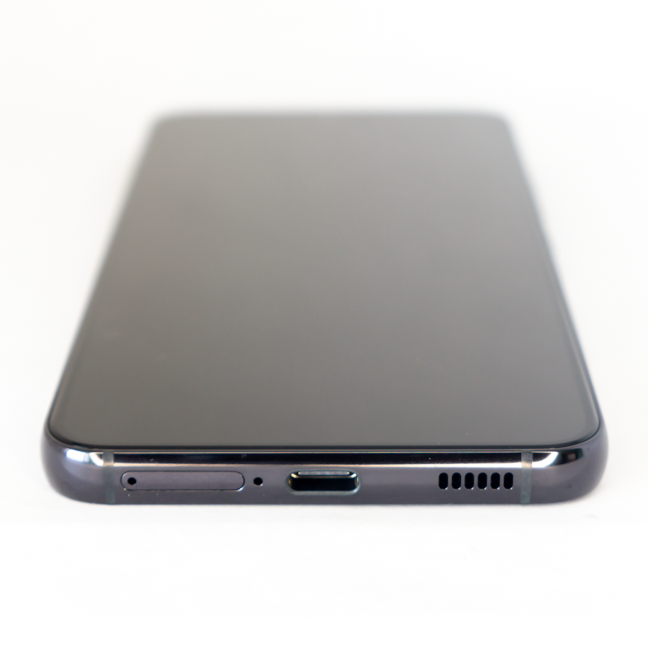
The bottom of the Samsung Galaxy S22
The Samsung Galaxy S22 5G has an IP68 rating for dust and water protection, so it’s highly resistant to dust and can withstand being submerged for 30 minutes in up to 1.5m of water. There are no less than eight colors you can choose from for your Galaxy S22. Phantom Black, Phantom White, Green, and Pink Gold are the “standard” ones:

The colors available for all customers
Then, there are the Graphite, Cream, Sky Blue, and Violet, which are exclusive to the Samsung online store.

These colors are available exclusively on the Samsung online store
Overall, the design and build quality of the Samsung Galaxy S22 are excellent. The smartphone feels very sturdy and is just the right size for people with average hands. The design follows the same general theme as its predecessor, but it gives up the rounded edges in favor of a more blocky, iPhone-like design.
Hardware specifications
With the Galaxy S22, Samsung went for an incremental upgrade to the Galaxy S21. In Europe, the S22 is powered by Samsung’s own Exynos 2200 chipset (a step up from the Exynos 2100 used on the S21). The rest of the world gets the Snapdragon 8 Gen 1 version, arguably the most powerful chipset on the Android market at the moment. The amount of memory hasn’t changed, it’s still 8 GB, with 128 GB or 256 GB of storage. I won’t even mention expandable storage, as Samsung doesn’t offer this “highly advanced” feature (which is present on its low-end smartphones). The operating system occupies roughly 22 GB.
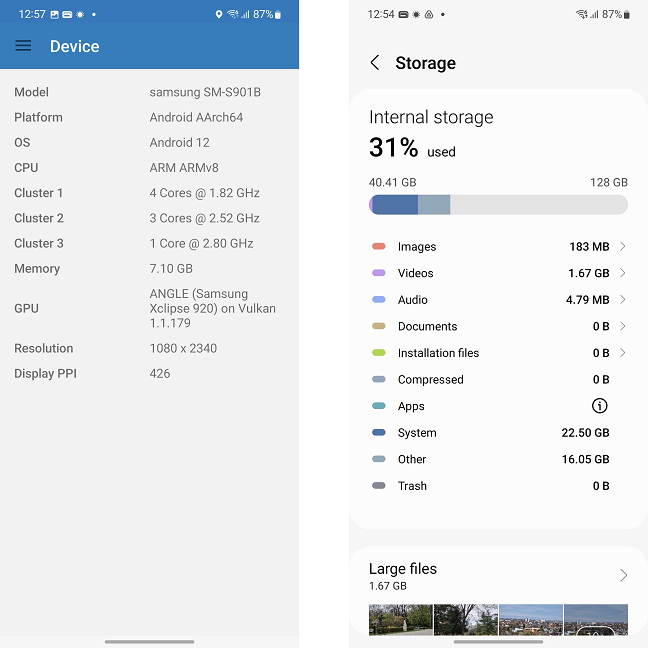
The chipset specs (left) and the space available (right) for the Samsung Galaxy S22
The device I used for this review is the Exynos variant with 128 GB of storage. Its performance in synthetic benchmarks is generally lower than that of the Snapdragon variant, but I’ll discuss this more in the corresponding section on the next page of this review.
The screen of the Samsung Galaxy S22 has a diagonal of 6.1 inches and a resolution of 1080 x 2340. The pixel density is thus excellent, at over 425 PPI. The Dynamic AMOLED 2X display is slightly smaller than the one on the Galaxy S21 but retains the same specs: 1300 nits maximum brightness, 120 Hz refresh rate, capable of displaying HDR10+ images.
The cameras are the most significant upgrade from the last generation. Here are the specs for each camera:
- The main camera has a 50 MP sensor, sitting behind an f/1.8, 23mm (wide) lens, with Dual Pixel PDAF (Phase Detection Autofocus) and optical image stabilization (OIS)
- The telephoto camera sensor has a resolution of 10 MP and the lens has an aperture equivalent to f/2.4, 70mm focal length. It provides 3x zoom and also has PDAF and OIS
- The ultrawide camera has 12 MP and an f/2.2, 13mm, 120˚ lens
- The front (selfie) camera has a resolution of 10 MP, with an f/2.2, 26mm (wide) lens. It has Dual Pixel PDAF, so it should be capable to focus quickly and accurately.
The Samsung Galaxy S22 can shoot videos at 8K/24 fps, 4K, and 1080p at 30/60 fps. It can also record slow-motion videos at 1080p/240 fps and super slow-motion videos at 720p with 960 fps. The videos benefit from gyro stabilization.
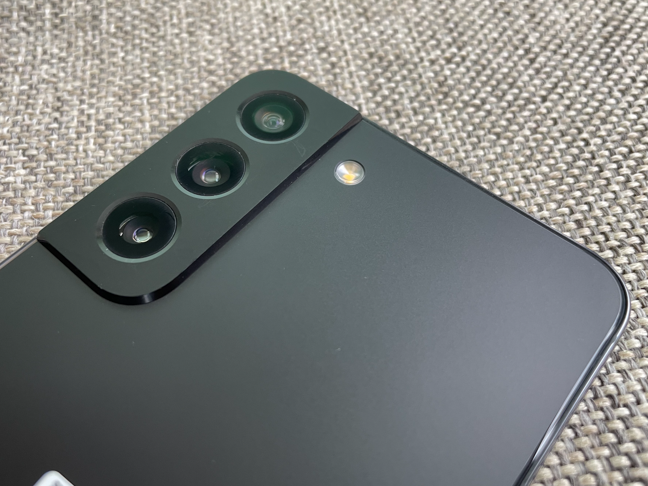
The main cameras of the Samsung Galaxy S22
Samsung Galaxy S22 has excellent connectivity: 5G Dual-SIM (only some versions), Wi-Fi 6, Bluetooth 5.2, NFC, GPS with A-GPS, GLONASS, BDS, and GALILEO compatibility. It also has a full array of sensors: light sensor, accelerometer, gyro, proximity sensor, compass, and barometer.
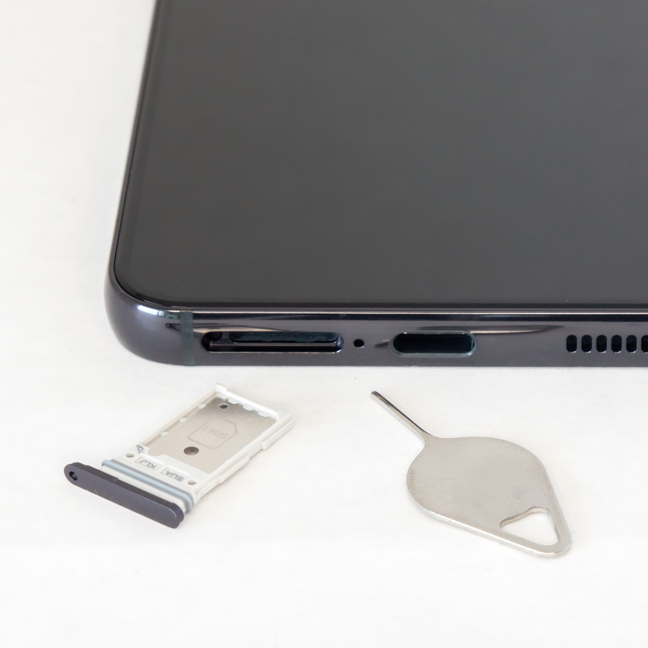
Samsung could have easily fitted a MicroSD card reader inside the S22, but they didn't
The battery is, sadly, smaller than the one on the Galaxy S21. It has 3700 mAh (down from 4000 mAh), and it can be charged at 25W. The Samsung S22 Ultra, in contrast, has a 5000 mAh battery capable of fast charging at 45W. The smartphone can be charged wirelessly and can also provide wireless power to other devices.
For a complete list of technical specifications, as well as the price, you can visit the product webpage: Samsung Galaxy S22.
Now that I showered you with all sorts of geeky specs, it’s time I get to the actual testing. On the next page, you can find the benchmark tests, as well as the real-life experience. Want to know what it’s like to live with the Samsung Galaxy S22? Read on.




